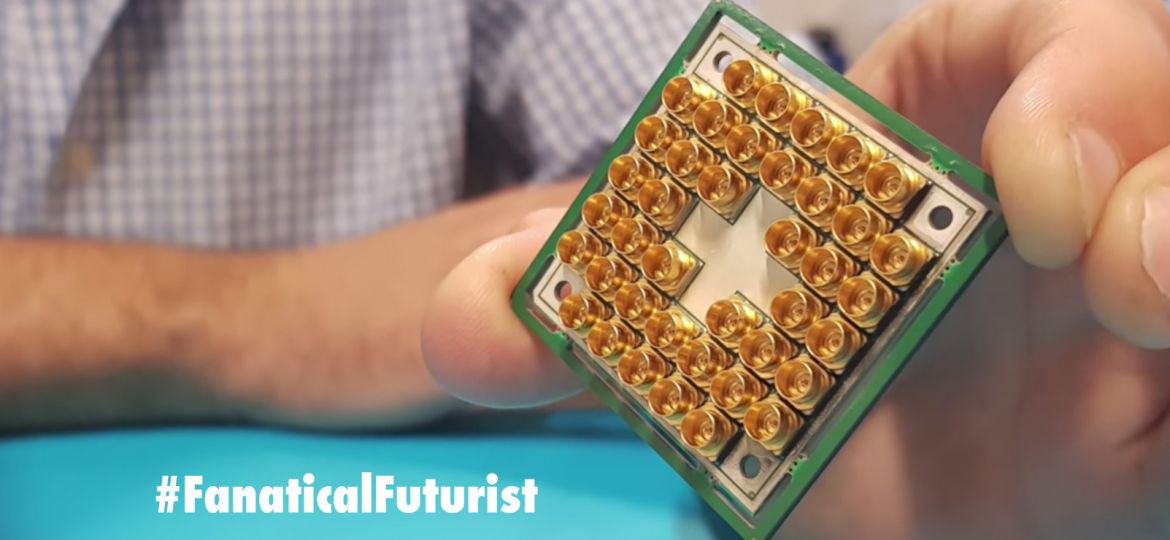
WHY THIS MATTERS IN BRIEF
- As the era of silicon computing “fades” we’re entering the “Jurassic Era” of computing and seeing the emergence of many new and exotic types of computing platform, including chemical computing, DNA computing, Molecular computing, Quantum Computing and Photonic computing
On Tuesday Intel announced that it’s going to be delivering a new type of chip to power the next, and first, generation of Quantum Computers, computers that are hundreds of millions times faster than today’s logic based computers, and that will need new forms of atomic and DNA storage to keep up with the processing speeds.
While classical computing encodes information in bits represented by ones and zeroes, quantum computing works with quantum bits, or qubits, which can be ones and zeroes at the same time. That quality, researchers believe, could make quantum computing perform certain tasks much faster than current computers can, like drug discovery and materials science research. But today’s quantum chips often require very cold temperatures and only work for short bursts of time.
Intel has previously produced quantum chips for testing, but the new quarter-sized 17-qubit superconducting test chip is the first one the company is discussing publicly since announcing its $50 million partnership with QuTech — a research institute that involves the Netherlands’ Delft University of Technology and Netherlands Organisation for Applied Scientific Research — two years ago. One reason is the new system includes special packaging that can make the chips for longer stretches of time.
“The design improves reliability and thermal performance, as well as reducing radio frequency interference,” said Jim Held, the director of Emerging Technologies Research at Intel Labs.
It makes sense that Intel is opening up now about the state of its quantum program, given that in recent months Google, who say they’ll announce a 49 Qubit chip by next year, and in do so break a benchmark limit known as the “Quantum Supremacy” limit, the point at which the machine would be able to perform calculations that could not be simulated on a conventional supercomputer, IBM, who recently showed off a 17 Qubit chip, and Microsoft have all shown off their interest and smarts in the space. Furthermore, we’re now also seeing a big rise in the number of privately funded quantum computing companies like Canada’s D-Wave Systems and the Bay Area’s Rigetti Quantum Computing who are also making significant advances in the field.
As one of the world’s biggest chipmakers, Intel is surely keen to ensure that its future is bright. Founded in 1968, Intel has long kept buyers coming back for more powerful chips in accordance with Moore’s Law, the concept from cofounder Gordon Moore that says the number of transistors on a chip will double roughly every two years. But while Intel execs continue to say Moore’s Law is doing fine, while at the same time abandoning it as the foundation for their future roadmaps, many experts in the space, despite the fact we can see a commercial path to 5nm and even 1nm chips, say it’s dead, or at best dying and on life support. Furthermore it now also looks increasingly likely that it will be replaced by what’s known as Rose’s Law, which is basically Moore’s Law but for quantum computers.
What is clear though from Intel’s announcement is that they increasingly believe the world should use different terms to talk about advancements in silicon, and that stance comes as the company has been building up a portfolio of chips designed for Artificial Intelligence (AI), a domain where Nvidia has seen significant traction and gains in the past year. For instance, Intel Labs recently developed “a first-of-its-kind self-learning neuromorphic chip.”
That said though that doesn’t mean today’s chips will become obsolete anytime soon. Quantum computing “is not going to replace today’s computer,” Held said, “it’s going to augment them. It doesn’t do all the things today’s computers do well and will continue to do well.”
Either way though, whichever way you look at it, we’re now seeing the birth of the next computing revolution, and unlike today’s where we are predominantly tied to silicon, the next revolution is akin to the Jurassic Era where we saw an explosion of new life forms and species, except in this case it’s not just quantum computing, it’s Chemical computing, DNA computing, Molecular computing and Photonic computing, to name just four.
















